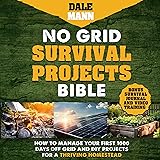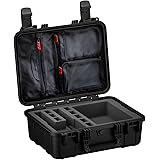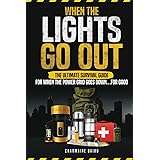In a wilderness scenario, every resource holds potential value. Data suggests that unexpected survival situations frequently arise. Mastering unconventional techniques can significantly enhance preparedness. The accompanying video, “10 Wilderness Survival Tips in 10 Minutes,” showcases twelve expert-level **wilderness survival tips**. This article delves deeper into these ingenious **survival skills**, offering expanded insights and practical applications. Optimal resource utilization is often crucial for emergency preparedness. These methods transform everyday items into vital survival tools.
Ingenious Solutions for Shelter Integrity
Maintaining shelter integrity is paramount. Compromised protection can lead to hypothermia or exposure. Expedient repairs are often necessary. Two primary field repair methods are discussed. These techniques utilize common items effectively.
Chewing Gum: An Unexpected Adhesive
Chewing gum offers a surprising solution for tarp and tent repairs. Its pliable nature allows for easy manipulation. Once chewed, the gum forms a sticky, moldable mass. This material effectively seals small punctures or tears. Application should be performed on both sides of the damage. Upon drying, the gum sets into a durable, firm patch. This method provides a temporary yet reliable seal. It is also easily removable when a permanent repair is possible.
Paracord: Fusing for Fabric Fortification
Paracord offers another robust repair option. Its synthetic fibers melt readily under heat. A length of paracord is threaded through the hole. Approximately 1.5 inches of the tag end is left exposed. A lighter is then used to melt this exposed end. Extreme caution must be exercised. A knife blade can shield adjacent tarp material from heat. As the cord melts, the flat of the knife quickly extinguishes the flame. This action compresses the molten material onto the fabric. A fast, secure seal is created within seconds. Prior testing for fabric flammability is highly advised. This technique provides a strong, semi-permanent repair.
Mastering Fire Craft with Everyday Items
Fire starting is a fundamental **survival skill**. It provides warmth, protection, and cooking capability. Improvised methods are often critical. The environment provides many natural tinder sources. Modern items can also be repurposed for ignition.
Battery and Wrapper: The Arc of Ignition
A chewing gum wrapper, specifically the shiny, foil-backed type, can initiate combustion. This material possesses conductive properties. It is carefully cut into an hourglass shape. Four such strips offer multiple attempts. A standard AA battery is typically sufficient. One end of the foil touches the battery’s negative terminal. The other end contacts the positive terminal. This creates a short circuit across the narrow foil section. Intense heat is rapidly generated at this constriction. This heat is often sufficient to ignite the wrapper. Prompt transfer to prepared tinder is essential. The resulting flame is brief and requires immediate fuel. Delicate manipulation is crucial for success. Incorrect technique can cause rapid burnout. Batteries and open flames demand careful handling.
Harnessing Nature’s Tinder: Bracken and Cattails
Natural tinder sources are abundant in most environments. Dry bracken, for instance, ignites readily. Its fibrous texture catches a spark effectively. Greater reedmace, commonly known as cattails, also offers valuable tinder. The mature heads contain hundreds of fine seeds. These seeds, when fluffed, are highly combustible. They create a ‘flash tinder’ effect. Ignition is almost instantaneous with a ferro rod. However, the flame is short-lived. A substantial amount of follow-up tinder must be ready. Cattail rhizomes are another valuable part of the plant. They can be processed into a starch or flour. This provides a substantial calorie source.
Enhancing Stealth and Tool Versatility
Tactical awareness is crucial in many **wilderness survival** scenarios. Managing light emissions is often necessary. Optimizing multi-purpose tools also extends their utility. These insights prove invaluable.
Head Torch Adaptation for Low-Light Operations
A head torch emits a powerful, often reflective beam. This can compromise stealth at night. A simple piece of masking tape can mitigate this. It is applied over the torch’s lens. This diffuses the emitted light significantly. The harsh flare is effectively reduced. Reflectiveness of the beam is also greatly diminished. Sufficient light remains for essential camp tasks. This modification prevents unwanted detection. It also preserves night vision more effectively. This technique ensures covert movement and activity.
Swiss Army Knife: Beyond the Blade
The Swiss Army knife is an iconic utility tool. Its corkscrew component is often overlooked in survival contexts. However, it proves invaluable for knot manipulation. Extremely tight knots in cordage can be challenging. The corkscrew’s spiral can be worked into the knot’s center. This creates a small loop or opening. This access point allows for loosening strands. It helps to unravel complex or seized knots. This method preserves cordage integrity. It prevents cutting valuable ropes. The corkscrew’s versatility extends beyond bottles.
Resource Acquisition and Emergency Communication
Sustenance and communication are critical for survival. Improvised fishing techniques provide food. Signaling can alert rescuers to one’s location. Both are essential **survival skills** that must be practiced.
Field Sharpening Fish Hooks with Natural Stones
A blunt fish hook drastically reduces fishing success. A sharpening stone is often unavailable in the field. Smooth, flat riverbed stones can serve as an effective substitute. Jagged stones are unsuitable due to uneven surfaces. The hook’s point is rubbed against the stone. Gentle, consistent pressure is applied. The angle of the hook must be maintained. Eight to ten strokes are typically performed on the tip. The hook is then laid on its side. The top section of the point is sharpened. This process is repeated on the other side. This hones three critical facets of the hook. A sharp hook will catch firmly on a fingernail. While not as fine as a dedicated whetstone, this method restores usability. It significantly improves chances of a successful catch.
The Multi-Purpose Survival Tin
A small metal survival tin is a vital asset. It often contains essential fire-starting elements. A flint and steel, magnifying glass, and tinder are common inclusions. These items are ready for immediate deployment. Beyond its contents, the tin itself serves a crucial purpose. Its shiny metallic surface acts as an effective signal mirror. Flashing sunlight can attract distant attention. Standard SOS signals can be transmitted. This provides a passive method for rescue communication. The tin’s reflective properties are thus dual-purpose. It becomes an active tool for alerting others.
Edible and Medicinal Plants in the Wild
Knowledge of wild flora can sustain life. Certain plants offer crucial nutrients. Others possess medicinal properties. Identifying these resources is a key **survival skill** component. Botanical literacy is indispensable.
Pine Needles: A Potent Vitamin Source
Pine trees are ubiquitous in many environments. Their needles are a remarkable source of vitamins. They contain five times the concentration of Vitamin C found in a lemon. They are also packed with Vitamin A. These vitamins offer numerous health benefits. Vitamin C boosts the immune system. It combats illness and infection. It can also alleviate heart disease, varicose veins, skin complaints, and fatigue. Vitamin A supports eye health and night vision. It also improves hair and skin regeneration. Red blood cell production is also enhanced. Pine needle tea is easily prepared. Fresh needles are steeped in freshly boiled water. Infusion is preferred over direct consumption. This prevents needle ingestion. The resulting tea is a powerful immune booster. It offers significant health advantages in the field.
Watermint: Aromatic and Therapeutic
Watermint (Mentha aquatica) is a common sight near water sources. Its presence is often detectable by its distinct aroma. This wild edible is identifiable by its minty fragrance. It thrives in damp woodlands and pond edges. Watermint possesses calming properties. It can be brewed as a tea to soothe nerves. It also alleviates stomach problems. Like other mints, it is a good source of Vitamin A. This fat-soluble vitamin is vital for eye health. It specifically aids night vision. Watermint has also been traditionally used. It helps alleviate stomach pain. It has even been employed in IBS treatment. Hybridization with spearmint produces peppermint.
Greater Reedmace (Cattails): The Supermarket of the Swamp
Greater reedmace, or cattails, are a prolific water-based plant. They are easily identified by their distinctive heads. These resemble a “sausage on a stick.” The roots, or rhizomes, are a primary food source. They can be washed and processed. Starch can be extracted to make flour. This provides a valuable carbohydrate. The brown head of the plant also offers a critical resource. It contains hundreds of thin seeds. When dry, these seeds fluff up readily. They serve as excellent tinder for fire lighting. They catch a spark from a ferro rod easily. However, their ignition is rapid but short-lived. More substantial tinder must be prepared beforehand. Early season heads may still contain green seeds. These are less effective as tinder. Late summer offers the best collection window.
Safeguarding Water Supply
Access to safe drinking water is non-negotiable. Contaminated water leads to illness. Improvised collection and filtration methods are vital. These are fundamental **wilderness survival tips** for health. Every effort must be made to purify water.
Moss: Nature’s Water Carrier
Moss, often found in shaded woodlands, has unique properties. It possesses excellent insulation characteristics. It can also retain significant amounts of water. After rainfall, moss acts like a sponge. It absorbs and holds a large volume of liquid. Even after dripping, a quick wring releases more. This property makes moss a viable water carrier. It allows for transport of small quantities of water. This is especially useful when containers are scarce. However, the collected water must always be filtered. Subsequent boiling is also highly recommended. Assurance of water potability is essential. Filtering removes large particles. Boiling kills pathogens.
Improvised Water Filtration with a Sock
In dire circumstances, a clean sock can aid water filtration. It serves as a rudimentary pre-filter. Placing the sock over a bottle opening is one method. Alternatively, it can cover the container receiving water. As water passes through, the sock traps larger particles. Mud and dirt are effectively removed. This process requires multiple passes. The water clarity improves with each filtration. This initial step does not purify the water. It merely removes suspended solids. Following this, the water absolutely must be boiled. Boiling eradicates harmful microorganisms. This ensures the water is safe for consumption. Reliable water treatment is a cornerstone of **wilderness survival tips**.











